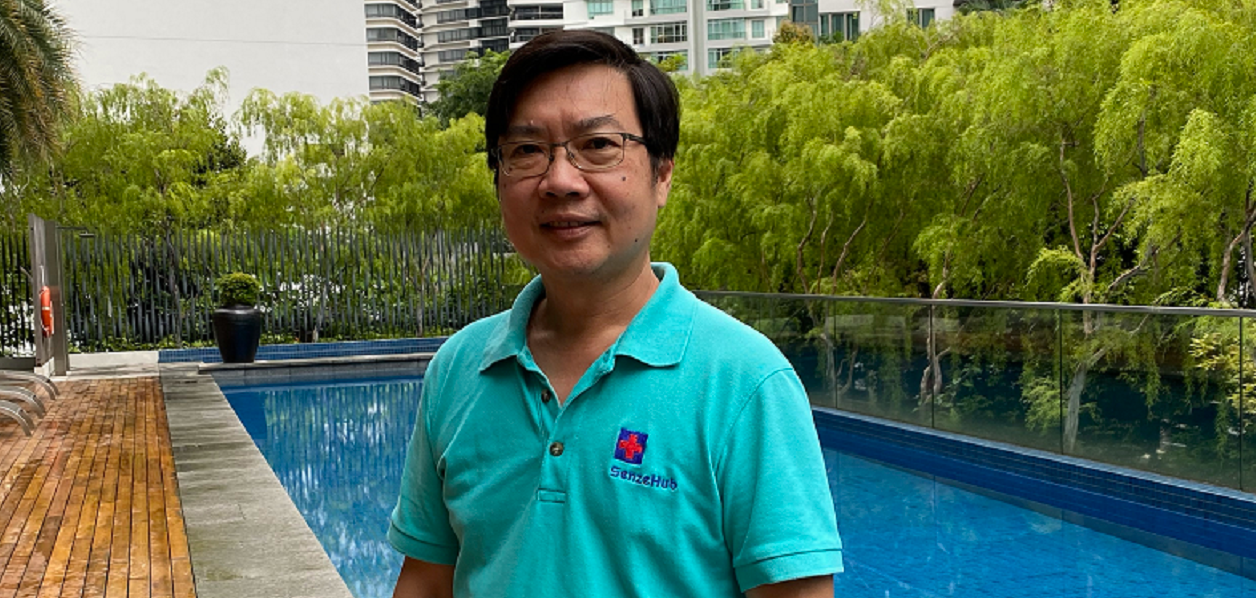Innovating towards independence
Embracing open innovation has helped SenzeHub to develop useful and commercialisable solutions in the form of healthcare wearables.
Like most developed countries around the world, the citizens of Singapore can expect to enjoy a high life expectancy. These added years, however, are also driving a dramatic demographic shift. In 2020, 15% of the population was aged 65 and above; but by as soon as 2035, that figure is expected to double to 32%.
Caring for the elderly is thus likely to fall on the shoulders of the “sandwich” generation, who will have to support their aging parents while pursuing their careers and raising children. Existing solutions like closed circuit television monitors allow caregivers to monitor the elderly while at work, but at the expense of their privacy. To ease the anxieties of family members—while promoting independence in the elderly—SenzeHub has developed a range of wearables that can non-invasively monitor vital signs in real-time and alert emergency contacts if necessary.
SenzeHub CEO and founder George Heng shares with IPI how the company’s commitment to open innovation has revolutionised how they address gaps in the healthcare sector.
1. What is the core competency of SenzeHub?
SenzeHub researches and develops large-scale multi-user wearables for health and wellness monitoring. We own all parts of the intellectual property in our end-to-end solution, including hardware design, firmware, network infrastructure, database, backend and dashboard software. Our work is similar to building an Internet of Things system with sensors throughout a location, for example, within a large building or even a whole campus.
Our acquired expertise and skills lie in the talented people who came together to develop the wearables, from selecting parts, drafting schematics, footprint, placement, routing, Gerber files for printed circuit board (PCB), components kitting, PCB assembly, functional testing, enclosure CAD, 3D printing, tooling, up to final assembly and integration.
2. What was the turning point in SenzeHub’s history that convinced you that open innovation was the right way to go?
We were given the chance to think out-of-the-box when we needed to come up with a working solution to address an industry problem statement that was both business and technology-related.
To quote Henry Chesbrough, the faculty director of the Garwood Center for Corporate Innovation at the University of California, Berkeley, “For business, open innovation is a more profitable way to innovate, because it can reduce costs, accelerate time to market, increase differentiation in the market and create new revenue streams for the company. So there’s a lot of opportunity for business to profit from open innovation.”
3. How has open innovation benefitted SenzeHub thus far, whether it is to improve existing products or to explore new ones?
Innovating to meet a specific demand or solve a specific problem gave us a unique approach to creating novel products. Using open innovation to tackle well-defined problems identified by healthcare practitioners, we are confident that there is real and not just perceived demand for the solutions we come up with. Through addressing real problems, we are also assured that the possibility of commercialisation and adoption is increased.
Through working with IPI, Enterprise Singapore and Singtel, we have also connected with other entities like Singapore General Hospital, the Agency for Integrated Care, the Agency for Science, Technology and Research, Samsung and the Workplace Safety and Health Institute. These connections have helped spread awareness of what we do and provided us opportunities for other product developments.
4. How do you encourage a culture of open innovation in SenzeHub within a complex healthtech ecosystem?
With open innovation in healthtech, we are often pushing the boundaries of the issues that need to be solved. We do this by working with our technical team to find plausible ways of using emerging technologies and allowing our staff to explore different creative ideas to create new value in the healthcare domain.
5. What are some lessons that you have learnt in the process of engaging in open innovation with partners in the healthcare and electronics sectors, and beyond?
It is imperative to network and get to know more people. Even if we do not end up working together directly, these connections might link us up with others who happen to require our company’s solutions. All these linkages help to generate related enquiries, a few of which we have already received and benefitted from.
6. How has IPI enhanced SenzeHub’s open innovation journey?
I like to take this chance to acknowledge Colin and Kung Kiat from the IPI team. Both of them have gone out of their way to offer us valuable expert advice on relevant technical areas. They have also linked us up with our first pilot customer looking for a firm to help them in real-time health monitoring of many people within one location.

